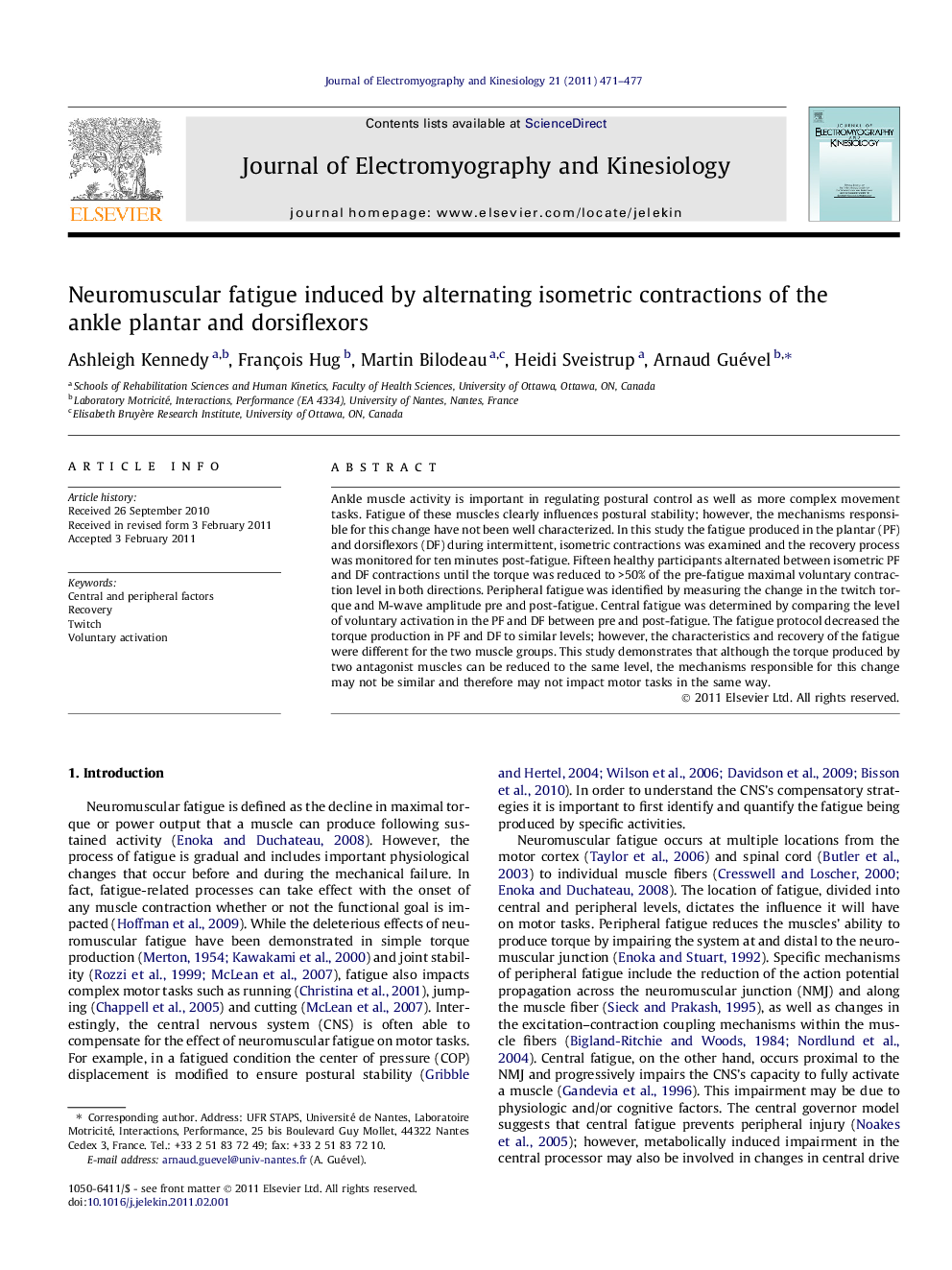| Article ID | Journal | Published Year | Pages | File Type |
|---|---|---|---|---|
| 6210595 | Journal of Electromyography and Kinesiology | 2011 | 7 Pages |
Ankle muscle activity is important in regulating postural control as well as more complex movement tasks. Fatigue of these muscles clearly influences postural stability; however, the mechanisms responsible for this change have not been well characterized. In this study the fatigue produced in the plantar (PF) and dorsiflexors (DF) during intermittent, isometric contractions was examined and the recovery process was monitored for ten minutes post-fatigue. Fifteen healthy participants alternated between isometric PF and DF contractions until the torque was reduced to >50% of the pre-fatigue maximal voluntary contraction level in both directions. Peripheral fatigue was identified by measuring the change in the twitch torque and M-wave amplitude pre and post-fatigue. Central fatigue was determined by comparing the level of voluntary activation in the PF and DF between pre and post-fatigue. The fatigue protocol decreased the torque production in PF and DF to similar levels; however, the characteristics and recovery of the fatigue were different for the two muscle groups. This study demonstrates that although the torque produced by two antagonist muscles can be reduced to the same level, the mechanisms responsible for this change may not be similar and therefore may not impact motor tasks in the same way.
